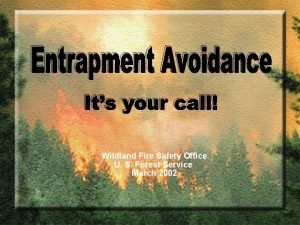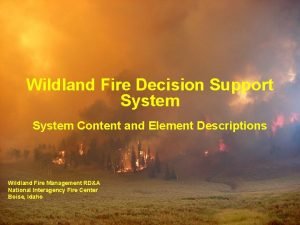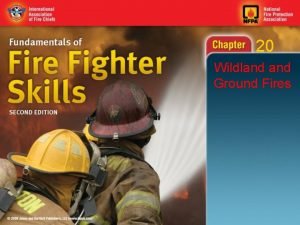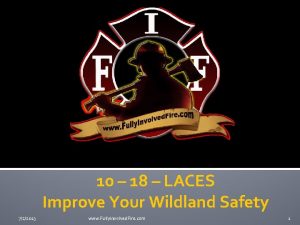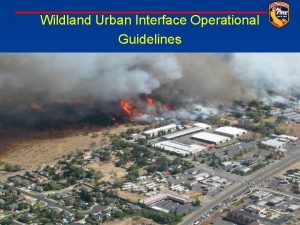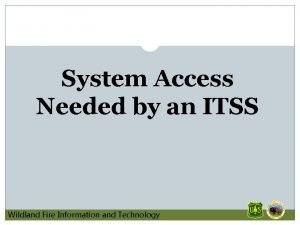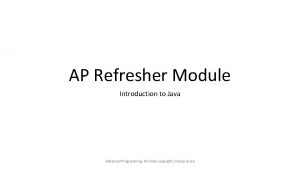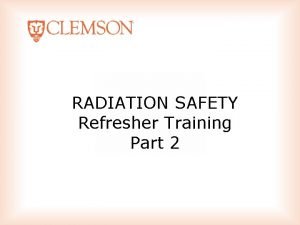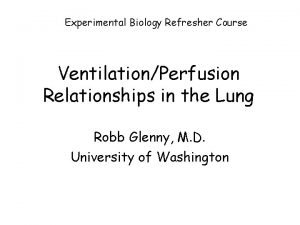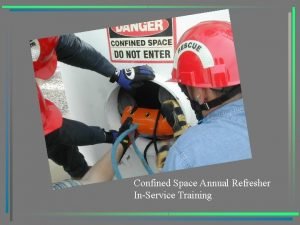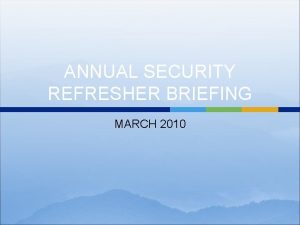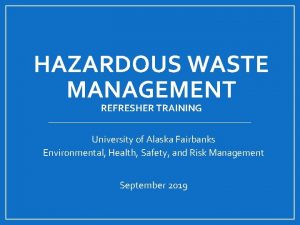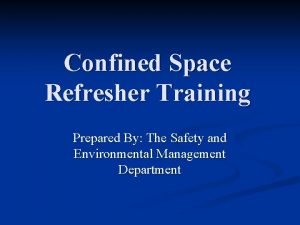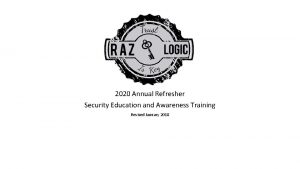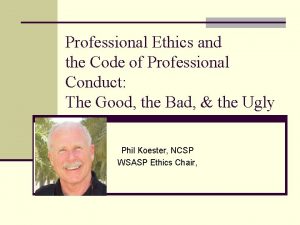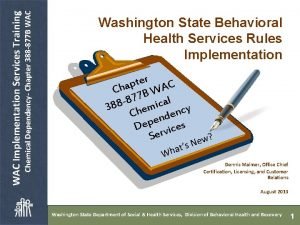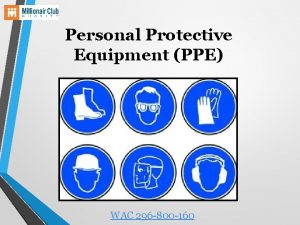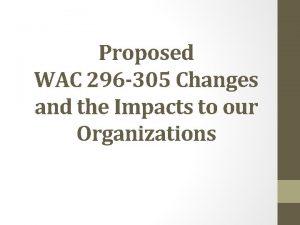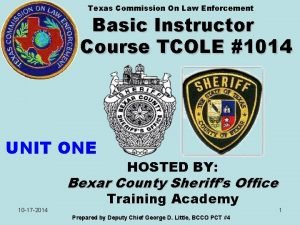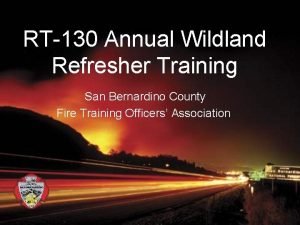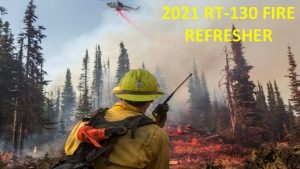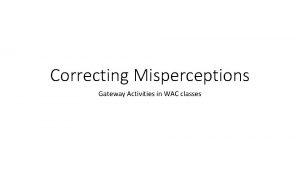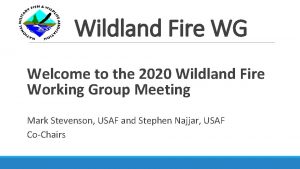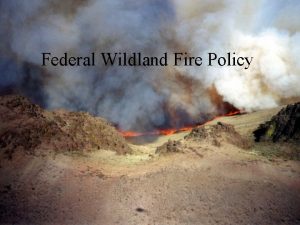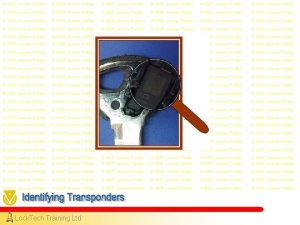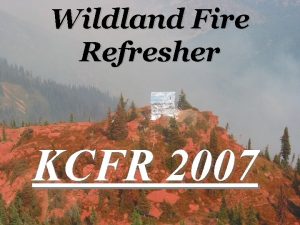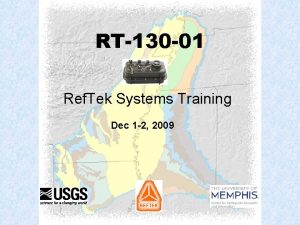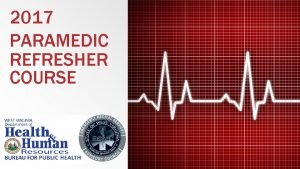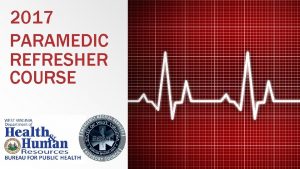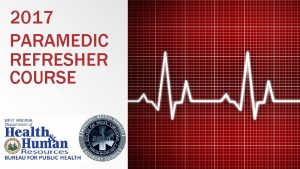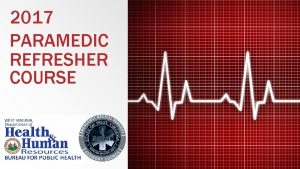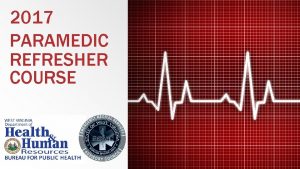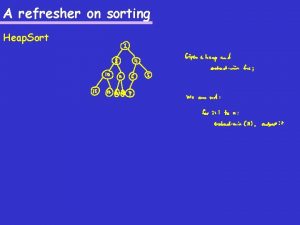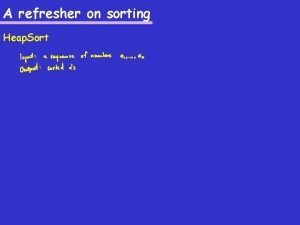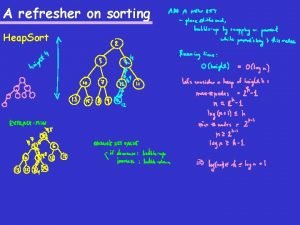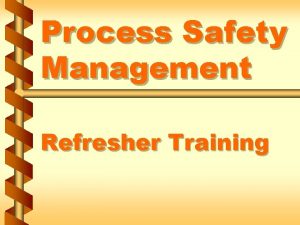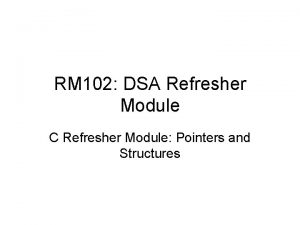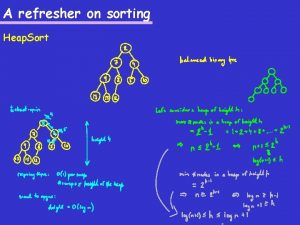2017 Wildland Refresher RT130 Instructor Jeremy Stocker WAC





















































- Slides: 53

2017 Wildland Refresher { RT-130 – Instructor Jeremy Stocker

WAC 296 -305 10 Standard Fire Orders 18 Watchout Situations Common Denominators LCES Latest Research on Safety Zones Firefighting Airspace Developing Realistic Tactical Objectives Communication Tools Fire Shelter Deployment Topics Covered

WAC 296 -305 -07001 Wildland Fire Operations Definitions: Urban wildfire: An uncontained fire requiring suppression action usually spreading through ground cover, vegetative fuels, brush, grass, and landscaping; often threatening residential and commercial structures within an urban environment with access to established roadways and water systems. Wildland firefighting: The activities of fire suppression and property conservation in woodlands, forests, grasslands, brush, and other such vegetation or any combination of vegetation that is involved in a fire situation but is not within buildings or structures. Our State Law

WAC 296 -305 -07002 Wildland Firefighter Accountability (1) Urban wildfire and wildland firefighters shall not be required to wear personal alerting devices except when wearing self-contained respiratory equipment. (2) An officer shall maintain positive communication with any individual during those times that the member is assigned an ancillary firefighting task (examples would include, but are not limited to, scout, incident safety officer, or lookout). (3) Urban wildfire and wildland firefighters engaged in direct fire attack shall work in teams of two or more unless they are in visual or voice contact with an officer. (4) On initial attack fires, the incident commander shall maintain the name and location of all personnel on the incident. (5) On extended attack fires, the incident commander shall: (a) Ensure the maintenance of the name and location of all personnel within their unit, division, or branch. (b) Transfer/confirm personnel and unit information to the appropriate incident command system (ICS) staff as soon as possible. (c) Announce transfer of command to all on scene. (d) Ensure that personnel and unit information is recorded in the command post as soon as possible. (6) When a fire "blows up" or makes a run that crosses planned control lines, officers with affected crews shall conduct an accounting of all personnel assigned to fire suppression and report any missing personnel to the incident commander. Our State Law

WAC 296 305 07004 Heat-related illness prevention for wildland firefighters. (1) At all wildland fires, members shall be provided with a minimum of one quart per hour of electrolyte drinks or potable water. (2) Officers at wildland fires shall be trained in the symptoms of heat-related disorders and shall observe their crews for such behavior. Appropriate action shall be taken in the event a crew member displays such symptoms. (3) At all wildland fires, the incident commander shall consider the circumstances of the incident and make adequate provisions early in the incident for the rest, rehabilitation and hydration of all members operating at the scene. These provisions shall include fluid replenishment; other factors to consider are the extremes of the climatic conditions and other environmental factors that increase the firefighter's heat stress. (4) One hour is the maximum time that individuals can work in high temperatures in structural protective clothing. Agencies may substitute crews to avoid the one-hour bench mark or increase crew size to complete the job in less than one hour. (5) Members may be reassigned to return to duty throughout the incident cycle once a work-to-rest ratio (company and crew) rehabilitation rotation has been established. Our State Law

WAC 296 -305 -07006 Equipment for wildland firefighting. (1) All equipment on an apparatus shall be carried in an enclosed compartment or otherwise securely mounted on the apparatus and guarded, so that individuals cannot accidentally come in contact with equipment that may injure them. (2) All hand tools, when not in use, shall have appropriate covers and guards to prevent injury. (3) Firefighters whose duties require them to operate a power chain saw shall wear flexible ballistic nylon pads, sewn or otherwise fastened into the trousers, or other equivalent protection that shall cover the full length of the thigh to the top of the boot. Additional trouser, eye, hearing, face and head protection as required by this chapter shall be worn. (4) Employees shall not use the chainsaw to cut directly overhead, or at a distance that would require the operator to relinquish a safe grip on the saw. (5) Only personnel trained in firing equipment shall handle and use such equipment, and observe the manufacturers' recommendations. Our State Law

WAC 296 -305 -07008 Aircraft operations for fighting wildland fires. (1) Whenever fixed wing and rotary aircraft are being utilized on an incident, personnel trained in air operations management shall be assigned as necessary by the incident commander/operations section chief. (2) Prior to the initiation of air operations, all personnel operating in close proximity to an air drop shall be notified of such activity. (3) Personnel shall not intentionally operate in an area where it can reasonably be expected that they may be hit with retardants or suppressants from fixed wing or rotary aircraft. (4) Radio communications shall be maintained between an aircraft/air attack group supervisor and the appropriate ground officer. https: //www. youtube. com/watch? v=St_3785 j. J_k (5) Personnel assigned to ride in fixed wing or rotary aircraft shall be briefed in the correct approach, riding and off-loading procedures for the particular type of aircraft. Our State Law

WAC 296 -305 -07010 Training for wildland firefighting (1) This section shall apply to all personnel and agencies called on to provide services at any fire defined as a "wildland fire. " (2) This section shall not apply to structural suppression crews' actions taken on urban wildfires. (3) Suppression personnel assigned to a wildland fire shall be trained to a NWCG firefighter level II or a comparable class of training. (a) "Comparable" training shall be determined by the employer. (b) Nothing in this section shall preclude the use of local residents, affected parties or contracted firefighting resources to suppress wildland fires if they are under the direct supervision of a qualified fire line officer. (4) Supervisory personnel shall be trained to a level commensurate to the position and responsibility they are to assume. (5) All personnel will be trained and capable of demonstrating competency in utilizing the Incident Command System (ICS). (6) All suppression personnel shall annually review the ten fire orders, the eighteen "watch out" situations, and the four common denominators of tragedy fires. Our State Law

10 Standard Fire Orders

The original ten Standard Firefighting Orders were developed in 1957 by a task force. The Standard Firefighting Orders were based in part on the successful "General Orders" used by the United States Armed Forces. The Standard Firefighting Orders are organized in a deliberate and sequential way to be implemented systematically and applied to ALL fire situations. -US Forest Service 10 Standard Fire Orders

1) Keep informed on fire weather conditions and forecasts. During your initial briefing fire weather should be addressed. If it is not, ASK! Remain alert of weather conditions and changes in forecast during fire operations. 10 Standard Fire Orders

2) Know what your fire is doing at all times. Be aware of fire conditions. Remain alert to how the fire is burning and where it is burning. 10 Standard Fire Orders

3) Base all actions on current and expected behavior of the fire. Recognize fuels and anticipate fire changes. Be prepared for weather changes that may change fire behavior. 10 Standard Fire Orders

4) Identify escape routes and safety zones and make them known. During your crew briefing safe zones and escape routes should be identified. In the urban interface this could include previously burnt areas, large parking lots, bodies of water, and even swimming pools. If safe zones and escape routes are not identified, ASK! 10 Standard Fire Orders

5) Post lookouts when there is possible danger. Lookouts can help recognize fire changes and alert crews. For structural crews operating in the urban interface buildings and other obstructions often prevent firefighters from seeing the fire. In addition, lookouts can help firefighters be alert for other hazards such as power lines. 10 Standard Fire Orders

6) Be alert. Keep calm. Think clearly. Act decisively. It is critical to remain calm, identify threats, and respond accordingly. We must be thinking firefighters not heroes that blindly charge in. 10 Standard Fire Orders

7) Maintain prompt communications with your forces, your supervisor, and adjoining forces. Communication is critical. Respond immediately to messages, speak clearly, and report changes or hazards you observe. 10 Standard Fire Orders

8) Give clear instructions and insure they are understood. Ensure all messages are understood. When receiving messages, briefly repeat your orders back to confirm you correctly understood. 10 Standard Fire Orders

9) Maintain control of your forces at all times. In structural firefighting we would not separate a two person crew to search two floors of a building. In wildfires, follow the same crew integrity rules. We leave the asphalt together. We return to the asphalt together. 10 Standard Fire Orders

10) Fight fire aggressively, having provided for safety first. Remember to evaluate the risk vs. gain. PROVIDE FOR SAFETY ABOVE ALL ELSE!!! 10 Standard Fire Orders

18 Watchout Situations

Shortly after the Standard Firefighting Orders were incorporated into firefighter training, the 18 Situations That Shout “Watch Out!” were developed. These 18 situations are more specific and cautionary than the Standard Fire Orders and describe situations that expand the 10 points of the Fire Orders. If firefighters follow the Standard Firefighting Orders and are alerted to the 18 Watch Out Situations, much of the risk of firefighting can be reduced. -US Forest Service 18 Watchout Situations

1 - Fire not scouted and sized up. What if we can’t sizeup and scout? What are we looking for? 2 - In country not seen in daylight. What can be done when working at night? What are the hazards? 3 - Safety zones and escape routes not identified. What happens if this watchout comes up? 18 Watchout Situations

4 - Unfamiliar with weather and local factors influencing fire behavior. Why do we want to know local weather factors? What are your local weather factors? 5 - Uninformed on strategy, tactics, and hazards. What is strategy, tactics, and hazards? Why do we need to know them? 6 - Instructions and assignments not clear. What do we do if we are not sure what to do? 18 Watchout Situations

7 - No communication link with crewmembers/supervisors. How do we maintain communications? What do we do if we lose communications? 8 - Constructing line without safe anchor point. What is an anchor point? Do we need one, what are the hazards if we don’t 9 - Building fireline downhill with fire below. What are the dangers? IRPG? Downhill Checklist. 18 Watchout Situations

10 - Attempting frontal assault on fire. What are the hazards? What is the biggest flame front you should attempt a frontal assault on? 11 - Unburned fuel between you and the fire. What are the hazards? What can we do about it? 12 - Cannot see main fire, not in contact with anyone who can. What do we do? 18 Watchout Situations

13 - On a hillside where rolling material can ignite fuel below. What are the hazards? What can we do to mitigate? 14 - Weather is getting hotter and drier. How can we tell? What do we do about it? Trigger Points? 15 - Wind increases and/or changes direction. What do we do? What do we look for? 18 Watchout Situations

16 - Getting frequent spot fires across line. What is happening? What do we do about it? 17 - Terrain and fuels make escape to safety zones difficult. What is our escape time? Prep? 18 - Taking a nap near the fire line. Is this acceptable? When can we? 18 Watchout Situations

If firefighters follow the Standard Firefighting Orders and are alerted to the 18 Watch Out Situations, much of the risk of firefighting can be reduced. 18 Watchout Situations

L. C. E. S.

The 10 standard fire orders and 18 watch out situations can be a lot to remember. We should all review them at least once a quarter, and daily when on a project fire. Leading up to the summer months it is good to review them, and discuss how they could/do apply to us. However LCES is a good mnemonic to use to help encompass the 10’s and 18’s. L. C. E. S.

L - LOOKOUTS C – COMMUNICATIONS E – ESCAPE ROUTES S – SAFETY ZONES L. C. E. S.

LOOKOUTS: What is/are lookout(s)? A competent and trusted person located in an advantageous position who has the responsibility of watching for potential fire problems and then relating the situation to their supervisor. In mountain terrain, that could be one person situated on an opposite slope and watching for an uphill run. Other lookout sources that can be used are: aircraft pilots, fire tower operators or possibly one person on a crew assigned the job of watching a specific hazard. L. C. E. S.

Communications: What are communications? Can be provided in several forms: Face to Face, written Incident Action Plan, Briefing sessions, use of a Radio or Cell phone (if available). Crews are dependent on a variety of people to help ensure their safety because they will be concentrating on their job and may not be able to spot fire problems until too late. Information must be communicated to everyone concerned with the intent that it is known before an incident can occur. L. C. E. S.

Escape Routes: What are escape routes? What is escape time? A pre-determined route that can be used by anyone in the event that fire begins an unexpected run that will jeopardize the safety of crews or anyone else on the fire line. The escape route will take everyone to another pre-determined location (safety zone). Some consideration when establishing the escape route: should be able to walk it, should be marked (flagging tape), should be timed, should be away from the head of the fire, should be known to all, should be scouted. L. C. E. S.

Safety Zones: What is a Safety Zone? Safety zones where a firefighter may find refuge from danger. Clean sites that are clear of vegetation (natural or man-made). Considerations when establishing a site are: How long will it take to get there? Is it large enough for everyone? Will fire behavior (intensity) adversely effect occupants? Are there any other hazards (snags, rolling rocks)? Does everyone know where they are? L. C. E. S.

LCES needs to be committed to memory and used at all times in addition to the 10’s and 18’s being reviewed often. 10’s – 18’s - LCES

Common Denominators

The original common denominators (Carl Wilson) There are four major common denominators of fire behavior on fatal and near-fatal fires. Such fires often occur: On relatively small fires or deceptively quiet areas of large fires. In relatively light fuels, such as grass, herbs, and light brush. When there is an unexpected shift in wind direction or wind speed. When fire responds to topographic conditions and runs uphill. Alignment of topography and wind during the burning period should always be considered a trigger point to re-evaluate strategy and tactics. As you can see, the list is focused on the basics of fire – weather (specifically wind), fuels (fast moving), and topography (coupled with wind). The only item that seems to have anything to do with human behavior (specifically complacency) is the first, which mentions small fires or “deceptively quiet” areas of a large fire. Common Denominators Matt Holmstrom (January-Feburary 2016). Common Denominators on Tragedy Fires – Updated for a New (Human) Fire Enviroment. Wildfire Magazine (issue number if available). Retrieved from http: //wildfiremagazine. org/article/commondenominators-tragedy-fires-updated/

In 2006 Dick Mangan took on this same topic after MTDC released a statistical analysis of fatalities. His list added to the original made a very powerful case for his 21 st century Common Denominators. His list is shown here: Firefighters are most likely to die in an aircraft accident. Before every flight, fire managers must ask, “Is this flight essential? ” and “Is everyone onboard essential to the mission? ” Firefighters are nearly as likely to die in a vehicle accident as in an aircraft accident. Driving too fast for the conditions, failure to wear seat belts, rushing to a fire, and driving home while exhausted from firefighting kills firefighters. Firefighters can reduce their risk of dying from heart attacks on the job by staying fit, maintaining their body weight, and having regular medical checkups. Unexpected events such as falling snags, rolling rocks, downed power lines, and lightning strikes cause more than 8 percent of fatalities during wildland firefighting operations. Firefighters and fire managers can reduce fatalities by learning to expect these unexpected events. Common Denominators Matt Holmstrom (January-Feburary 2016). Common Denominators on Tragedy Fires – Updated for a New (Human) Fire Enviroment. Wildfire Magazine (issue number if available). Retrieved from http: //wildfiremagazine. org/article/commondenominators-tragedy-fires-updated/

More than 20 percent of fatalities during wildland firefighting operations continue to occur in burnovers. Carl Wilson’s original common denominators are just as important in the 21 st century as they were in the 20 th. Common Denominators Matt Holmstrom (January-Feburary 2016). Common Denominators on Tragedy Fires – Updated for a New (Human) Fire Enviroment. Wildfire Magazine (issue number if available). Retrieved from http: //wildfiremagazine. org/article/commondenominators-tragedy-fires-updated/

So what does this mean to us? All of the information regarding the common denominators was used from wildfire magazine. Please visit http: //wildfiremagazine. org/article/comm on-denominators-tragedy-fires-updated/ for more information. Common Denominators Matt Holmstrom (January-Feburary 2016). Common Denominators on Tragedy Fires – Updated for a New (Human) Fire Enviroment. Wildfire Magazine (issue number if available). Retrieved from http: //wildfiremagazine. org/article/commondenominators-tragedy-fires-updated/

The next 4 topics utilize the WFSTAR website topics. There are links for videos, student workbooks and instructor guidelines. You may have to copy and paste the links to open the documents. WFSTAR Topics

Latest Research on Safety Zones

View the Video for this topic here: https: //www. youtube. com/watch? v=NW 8 AMb mif. OA Then review the Take 5@2 https: //www. nifc. gov/wfstar/modules/Fire. Envi ro/safetyzones 2015/Take 5@2_Safety. Zones. pdf Discuss the Take 5 @ 2 as a class Latest Research on Safety Zones

Firefighting Airspace

Watch the video regarding firefighting airspace here: https: //www. youtube. com/watch? v=9 fj. F 2 KQ 75 TY For the student workbook: https: //www. nifc. gov/wfstar/modules/Eq. Av/airspace 201 2/SW_Firefighting_Airspace. docx For the Instructor Guide: https: //www. nifc. gov/wfstar/modules/Eq. Av/airspace 201 2/FG_Firefighting_Airspace. docx Complete the Student Workbook after reviewing the video. Firefighting Airspace

Developing Realistic Tactical Objectives

View the video here: https: //www. youtube. com/watch? v=y_a 14 Bq 20 9 I For the Student Workbook: https: //www. nifc. gov/wfstar/modules/HF/tactic alobjectives 2014/SW_Tactical_Objectives. pdf For the Instructor guide: https: //www. nifc. gov/wfstar/modules/HF/tactic alobjectives 2014/IG_Tactical_Objectives. pdf Complete the student workbook after completion of the video. Developing Realistic Tactical Objectives

Communication Tools

For the video view here: https: //www. youtube. com/watch? v=6 MHe. NCm. AK d. Y For the student workbook: https: //www. nifc. gov/wfstar/modules/commo/com mo_tools 2015/SW_Communication. Tools. pdf For instructor guide: https: //www. nifc. gov/wfstar/modules/commo/com mo_tools 2015/IG_Communication. Tools. pdf Complete the Student workbook after viewing the video. Communication Tools

Fire Shelter Deployment

Deploy practice shelters with your wildland PPE in 25 seconds or less. After completion of Fire Shelter Deployment that is the completion of the Wildland Refresher. If your agency participates in State Mobilization you also need to complete the State Mobilization Awareness. Fire Shelter Deployment
 Red helmet training
Red helmet training Quién soy como me llamó
Quién soy como me llamó Vendor stocker
Vendor stocker Beatrice stocker
Beatrice stocker Guy stocker
Guy stocker Wafer stocker
Wafer stocker Vendor stocker
Vendor stocker Trigger point wildland fire
Trigger point wildland fire Wfdss
Wfdss Pincer fire attack
Pincer fire attack 18 watchout situations for wildland firefighters
18 watchout situations for wildland firefighters Firescope structure triage
Firescope structure triage Ftp.nifc.gov to ftp.wildfire.gov
Ftp.nifc.gov to ftp.wildfire.gov Biology refresher
Biology refresher Java refresher course
Java refresher course Gdpr refresher training
Gdpr refresher training Saeta refresher course 2021
Saeta refresher course 2021 Radioactive refresher cocktail
Radioactive refresher cocktail Ipv refresher course
Ipv refresher course V/q mismatch vs shunt
V/q mismatch vs shunt Refresher training example
Refresher training example Object oriented programming java exercises
Object oriented programming java exercises Sql refresher
Sql refresher Confined space refresher training
Confined space refresher training Refresher briefing
Refresher briefing Alaska hazmat training
Alaska hazmat training Confined space refresher
Confined space refresher Vocabulary refresher group a answers
Vocabulary refresher group a answers Ifr refresher
Ifr refresher Security annual refresher training
Security annual refresher training Wac 181-87-060
Wac 181-87-060 Wac 296-307
Wac 296-307 Wac 388-877
Wac 388-877 Wac 296
Wac 296 Wac 296-155-305
Wac 296-155-305 Wac time
Wac time Wac 296-305
Wac 296-305 Bumper-wac
Bumper-wac Wac 296-800-160
Wac 296-800-160 Wac kmu
Wac kmu Wac 296-305
Wac 296-305 Kmu wac
Kmu wac Inventories mnemjian
Inventories mnemjian Instructor office hours
Instructor office hours Basic instructor course #1014
Basic instructor course #1014 Naismith was an instructor of
Naismith was an instructor of Instructor responsibilities and professionalism
Instructor responsibilities and professionalism Instructor operating station
Instructor operating station Cisco certified instructor
Cisco certified instructor Jrotc marksmanship instructor course online
Jrotc marksmanship instructor course online Cisco instructor certification
Cisco instructor certification Virtual instructor art
Virtual instructor art Pepperball hotshot
Pepperball hotshot Basic instructor course tcole
Basic instructor course tcole







